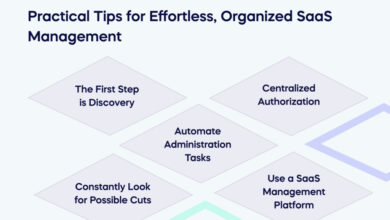
Threat Group Volt Typhoon Warrants Attention
Threat Group Volt Typhoon warrants attention – and not just because of the catchy name. This sophisticated threat actor has been making waves in the cybersecurity world, targeting critical infrastructure and sensitive data across various sectors. Their advanced tactics, persistent operations, and suspected state-sponsored backing make Volt Typhoon a serious threat that demands our immediate attention. Understanding their methods and motivations is crucial to building effective defenses.
We’ll delve into the group’s history, examining their origins, preferred targets, and the unique techniques that set them apart from other cybercriminals. We’ll dissect their tactics, techniques, and procedures (TTPs), exploring their malware, data exfiltration methods, and strategies for maintaining persistent access to compromised systems. Finally, we’ll explore mitigation strategies and what organizations can do to protect themselves from this formidable threat.
Volt Typhoon Group: Threat Group Volt Typhoon Warrants Attention
The Volt Typhoon threat group represents a significant and evolving threat in the cybersecurity landscape. Its sophisticated tactics, persistent operations, and focus on critical infrastructure highlight the increasing complexity of modern cyberattacks. While much remains unknown about its precise origins and motivations, analysis of its activities paints a concerning picture of a well-resourced and determined adversary.
Volt Typhoon Group: Origins and Suspected Actors
The precise origins of Volt Typhoon remain shrouded in mystery. Attribution is a complex process, and while definitive proof is lacking, strong evidence suggests a connection to China. Initial activity suggests the group has been operating for several years, possibly honing its techniques before launching more significant campaigns. The sophistication of its malware and the targeting of specific infrastructure point to a level of expertise and resources consistent with a state-sponsored or state-affiliated actor.
However, it is important to note that this remains a matter of ongoing investigation and analysis. Further research is needed to definitively link the group to any specific organization or government entity.
Primary Targets and Geographical Regions
Volt Typhoon’s primary targets are organizations within the United States, particularly those involved in critical infrastructure sectors such as telecommunications, transportation, and government. The group’s operations have predominantly focused on the United States, indicating a specific interest in disrupting or compromising American infrastructure. The geographical concentration of attacks on US soil suggests a deliberate strategy to target a specific geopolitical adversary.
This targeted approach contrasts with some other threat groups that have broader, less geographically focused campaigns.
Comparison with Other Threat Groups
Volt Typhoon’s tactics differ from other known threat groups in several key aspects. While some groups might focus on large-scale data breaches for financial gain, Volt Typhoon demonstrates a greater interest in persistent access and espionage. The group employs sophisticated techniques to maintain a long-term presence within compromised systems, often using custom-built malware and evasive techniques to avoid detection.
This persistent nature, coupled with the focus on critical infrastructure, distinguishes it from groups primarily focused on ransomware or financial theft. For example, unlike groups like Lazarus, which are often associated with financial theft, Volt Typhoon’s focus is primarily on intelligence gathering and potentially sabotage.
Timeline of Significant Volt Typhoon Attacks and Campaigns
Pinpointing exact dates of Volt Typhoon attacks is difficult due to the group’s stealthy operations. However, based on observed activity and public reports, a timeline can be tentatively constructed. Early activity likely began several years before the public disclosure of the group. Significant campaigns seem to have intensified in recent years, with evidence suggesting a pattern of escalating activity and refinement of techniques.
While specific dates and details of individual attacks are often kept confidential for national security reasons, the increasing frequency and sophistication of reported incidents suggest a continued and growing threat. The lack of publicly available, specific dates for attacks underscores the difficulty in tracking these highly sophisticated operations.
Volt Typhoon’s Tactics, Techniques, and Procedures (TTPs)

Volt Typhoon, a sophisticated Chinese state-sponsored cyber espionage group, employs a range of advanced techniques to achieve its objectives. Understanding their Tactics, Techniques, and Procedures (TTPs) is crucial for effective defense against their operations. Their methods are characterized by stealth, persistence, and a focus on long-term access to targeted networks.
Initial Access and Lateral Movement
Volt Typhoon’s initial access vectors often leverage spear-phishing campaigns targeting specific individuals within their chosen organizations. These campaigns utilize highly tailored emails containing malicious attachments or links leading to compromised websites. Once initial access is gained, the group leverages various techniques for lateral movement, including exploiting known vulnerabilities in network infrastructure components like VPN appliances or exploiting misconfigurations in cloud environments.
They often utilize legitimate administrative tools and accounts to blend in with normal network activity, making detection difficult. Their movement within the network is methodical and deliberate, aiming to gain access to high-value systems and data.
Malware and Tools
Volt Typhoon’s arsenal includes custom-developed malware designed for specific tasks, such as data exfiltration and maintaining persistence. These tools often utilize techniques to evade detection by security software, such as obfuscation and polymorphism. One notable aspect of their toolkit is the use of legitimate software, often modified or misused to achieve malicious goals. This allows them to operate under the radar, blending their actions with legitimate network activity.
For example, they may leverage scripting languages like PowerShell to automate tasks and move laterally within the network.
Data Exfiltration and Persistence
Data exfiltration is typically carried out through covert channels, often leveraging compromised network infrastructure components or cloud services. They may use techniques like DNS tunneling or HTTP protocols to transmit stolen data to their command-and-control servers. Maintaining persistence is critical to Volt Typhoon’s operations. They achieve this through the use of implants and backdoors installed on compromised systems, enabling them to regain access even after system reboots or security updates.
This often involves modifying system configuration files or leveraging scheduled tasks to ensure continuous access.
Hypothetical Volt Typhoon Attack Scenario
Imagine a scenario where a researcher at a defense contractor receives a spear-phishing email seemingly from a colleague. The email contains a malicious attachment, a seemingly innocuous document. Upon opening, the document executes malicious code, granting Volt Typhoon initial access. The malware then uses network reconnaissance tools to map the internal network. The group leverages a known vulnerability in a network share to move laterally, eventually gaining access to the company’s database server.
They use custom tools to exfiltrate sensitive data, employing DNS tunneling to avoid detection by firewalls. Finally, they install a backdoor to maintain persistent access for future operations, ensuring continued access to the compromised network for extended periods.
Attribution and Motives of Volt Typhoon
The attribution of cyberattacks is a complex process, often requiring meticulous analysis of malware, infrastructure, and operational techniques. In the case of Volt Typhoon, the evidence points towards a state-sponsored actor, although pinpointing the exact entity remains a challenge. Understanding the group’s motives is crucial for anticipating future attacks and developing effective countermeasures. This section will examine the available evidence for attribution and explore the potential geopolitical and strategic goals driving Volt Typhoon’s activities.
Evidence Supporting Attribution to a State-Sponsored Actor
Multiple indicators strongly suggest Volt Typhoon’s operations are backed by a nation-state. The group’s sophisticated techniques, long operational lifespan, significant resources dedicated to the operation, and the targets selected all point towards a well-funded and highly organized entity unlikely to be a purely criminal enterprise. The advanced persistent threat (APT) nature of the campaign, characterized by stealthy, long-term infiltration and data exfiltration, further supports this conclusion.
The consistent use of custom malware and the meticulous operational security displayed by the group indicate a level of expertise and resources typically associated with state-sponsored actors. Moreover, the targeting of critical infrastructure and government entities suggests a strategic objective beyond simple financial gain.
Potential Motives Behind Volt Typhoon’s Operations
Volt Typhoon’s activities likely stem from a combination of geopolitical factors and strategic goals. One primary motive could be espionage, aimed at gathering sensitive intelligence on critical infrastructure, government operations, and economic sectors. This intelligence could be used to inform strategic decision-making, assess vulnerabilities, or plan future actions. Another potential motive is the establishment of persistent access to critical systems, allowing for future disruption or sabotage if deemed necessary.
This capability could be used for coercive purposes or to gain leverage in geopolitical disputes. The long-term nature of the campaign suggests a focus on building capabilities for future operations rather than a short-term gain.
Comparison of Volt Typhoon’s Motivations with Other Similar Groups
Comparing Volt Typhoon to other known APT groups reveals both similarities and differences in their motivations. Groups like APT41, known for both state-sponsored espionage and financially motivated cybercrime, exhibit a dual-purpose approach. In contrast, the evidence currently available suggests Volt Typhoon’s focus is primarily on espionage and the establishment of persistent access, with less emphasis on financial gain.
This suggests a more focused and strategic approach, characteristic of groups with clear geopolitical objectives. Other groups, such as those attributed to China, often focus on intellectual property theft, whereas Volt Typhoon’s targets suggest a broader intelligence-gathering strategy.
Summary of Evidence Supporting Attribution Theories
| Evidence Type | Specific Evidence | Attribution Theory | Strength of Evidence |
|---|---|---|---|
| Malware Analysis | Unique code signatures, custom tools, advanced evasion techniques | State-sponsored actor with significant resources | Strong |
| Infrastructure Analysis | Use of sophisticated infrastructure, proxies, and VPNs to mask origins | State-sponsored actor with advanced capabilities | Strong |
| Targeting | Focus on critical infrastructure, government agencies, and defense contractors | Espionage or strategic disruption | Strong |
| Operational Security | High level of operational security and stealth | Experienced and well-resourced actor | Strong |
Impact and Consequences of Volt Typhoon’s Actions

Volt Typhoon’s actions have far-reaching consequences, extending beyond the immediate victims of their cyberattacks. Their sophisticated and persistent campaigns pose significant threats to national security, economic stability, and the overall cybersecurity landscape. Understanding the breadth and depth of their impact is crucial for developing effective countermeasures and mitigating future risks.The data targeted by Volt Typhoon reveals a focus on critical infrastructure and government entities.
This includes sensitive information related to telecommunications, transportation, energy, and defense sectors. The theft of such data can lead to significant disruptions, sabotage, intellectual property theft, and compromise of national security. Destruction of data can cause equally devastating operational and financial losses.
Types of Data Targeted and Potential Consequences
Volt Typhoon’s targets indicate a preference for data providing strategic advantage or causing significant disruption. This includes network configurations, blueprints for critical infrastructure, intellectual property, financial records, and personnel information. The consequences of data theft range from operational paralysis and financial losses to espionage and sabotage. Compromised personnel information could lead to identity theft and blackmail. The theft of intellectual property could cripple a company’s competitiveness and lead to significant financial losses.
Disruption of critical infrastructure could lead to widespread power outages, transportation delays, and even loss of life.
Real-World Consequences of Volt Typhoon’s Attacks
While specific details of Volt Typhoon’s attacks are often kept confidential for national security reasons, reports indicate that several organizations have experienced significant disruptions due to their activities. For instance, leaked information suggests attacks leading to data breaches resulting in the loss of sensitive information, potentially impacting national security initiatives. While specific organizations are rarely publicly named due to ongoing investigations and the sensitivity of the information involved, the patterns observed suggest a broad impact across numerous sectors.
The scale and sophistication of the attacks underscore the need for enhanced cybersecurity measures across all sectors.
Economic and Political Impacts
The economic impact of Volt Typhoon’s activities is substantial. Data breaches lead to direct financial losses through costs associated with incident response, legal fees, regulatory fines, and reputational damage. The disruption of critical infrastructure can lead to massive economic losses, impacting businesses, consumers, and the overall economy. Furthermore, the theft of intellectual property undermines innovation and economic competitiveness.
The political consequences are equally significant. Successful attacks on government entities can undermine national security, erode public trust, and influence policy decisions. International relations can also be strained if the attacks are attributed to a foreign state actor.
Broader Implications for Cybersecurity and National Security
Volt Typhoon’s activities highlight the growing sophistication and persistence of state-sponsored cyberattacks. Their operations underscore the need for a robust national cybersecurity strategy that includes enhanced threat intelligence sharing, improved cybersecurity infrastructure, and increased investment in cybersecurity workforce development. The ability of Volt Typhoon to maintain a persistent presence within targeted networks for extended periods emphasizes the importance of proactive security measures, such as continuous monitoring, vulnerability management, and incident response planning.
The long-term implications of such attacks extend to national security, potentially affecting critical infrastructure, economic stability, and international relations. The need for international cooperation in addressing these threats is paramount.
Mitigation and Defensive Strategies Against Volt Typhoon
The Volt Typhoon threat actor poses a significant risk to organizations, particularly those in the critical infrastructure sector. Effective mitigation requires a multi-layered approach encompassing proactive security measures, robust detection capabilities, and a well-defined incident response plan. Failing to address this threat can lead to data breaches, operational disruptions, and significant financial losses. This section Artikels key strategies for bolstering defenses against Volt Typhoon attacks.
A strong defense against Volt Typhoon hinges on implementing a comprehensive security posture that prioritizes prevention, detection, and response. This requires a holistic approach, encompassing technical controls, security awareness training, and robust incident response planning.
Best Practices for Mitigating Volt Typhoon Risk, Threat group volt typhoon warrants attention
Organizations should prioritize the following best practices to reduce their vulnerability to Volt Typhoon attacks. These measures focus on strengthening security infrastructure and enhancing overall resilience.
- Implement strong password policies and enforce multi-factor authentication (MFA) for all user accounts, especially privileged accounts. This adds an extra layer of security, making it significantly harder for attackers to gain unauthorized access.
- Regularly patch and update all software and operating systems to address known vulnerabilities. This is crucial, as attackers often exploit known vulnerabilities to gain initial access.
- Employ robust network segmentation to limit the impact of a breach. By isolating critical systems and data, the spread of malware can be contained.
- Implement and regularly update antivirus and anti-malware software on all endpoints. This provides a crucial first line of defense against malicious code.
- Utilize intrusion detection and prevention systems (IDS/IPS) to monitor network traffic for suspicious activity. These systems can identify and block malicious traffic before it can cause damage.
- Conduct regular security audits and penetration testing to identify vulnerabilities and weaknesses in the organization’s security posture. This proactive approach helps to identify and address vulnerabilities before attackers can exploit them.
- Employ data loss prevention (DLP) tools to monitor and prevent sensitive data from leaving the organization’s network. This is crucial for protecting intellectual property and confidential information.
- Develop and maintain comprehensive security awareness training programs for all employees. Educating employees about phishing scams and other social engineering techniques is vital in preventing initial compromise.
Importance of Robust Security Measures
The effectiveness of mitigation strategies heavily relies on robust security measures. These measures act as critical barriers against sophisticated attacks like those launched by Volt Typhoon.
Multi-factor authentication (MFA) significantly enhances account security by requiring multiple forms of authentication, making it considerably harder for attackers to gain access even if they obtain usernames and passwords. Intrusion detection systems (IDS) continuously monitor network traffic for malicious activity, providing early warning of potential attacks. Regular security audits provide a systematic evaluation of the organization’s security posture, identifying vulnerabilities and areas for improvement.
These audits are critical for maintaining a strong defense against evolving threats.
Technical Controls for Detecting and Preventing Volt Typhoon TTPs
Specific technical controls can be implemented to address the known Tactics, Techniques, and Procedures (TTPs) used by Volt Typhoon. These controls focus on early detection and prevention of malicious activity.
- Implement network traffic analysis tools to monitor for unusual communication patterns, such as connections to known malicious IP addresses or domains associated with Volt Typhoon’s activities.
- Deploy endpoint detection and response (EDR) solutions to monitor endpoint activity for signs of compromise, such as unusual process creation or file modifications.
- Utilize security information and event management (SIEM) systems to correlate security events from various sources, providing a comprehensive view of the organization’s security posture and enabling faster detection of malicious activity.
- Implement advanced threat protection solutions that leverage machine learning and artificial intelligence to identify and respond to sophisticated threats, including those that may evade traditional security controls.
Hypothetical Incident Response Plan for a Volt Typhoon Attack
A well-defined incident response plan is crucial for effectively handling a Volt Typhoon attack. This plan should Artikel clear procedures for containing, eradicating, and recovering from an attack.
The plan should include steps for isolating affected systems, containing the spread of malware, investigating the extent of the breach, restoring affected systems from backups, and implementing measures to prevent future attacks. Regular testing and updates of the plan are crucial to ensure its effectiveness in a real-world scenario. This plan should involve a designated incident response team with clearly defined roles and responsibilities, enabling a coordinated and effective response to a security incident.
Visual Representation of Volt Typhoon’s Infrastructure
Visualizing Volt Typhoon’s infrastructure requires understanding its likely distributed and layered nature, designed for resilience and operational security. This isn’t a single, easily mapped network, but a complex system of interconnected components, likely spread across multiple geographical locations and employing various techniques to obscure its true architecture.The following sections detail potential components, data flow, and management techniques, based on observed TTPs and common practices of advanced persistent threat (APT) groups.
Potential Structure of Volt Typhoon’s Command-and-Control Infrastructure
Volt Typhoon’s infrastructure likely consists of a tiered architecture. A top-tier, highly secure command-and-control (C2) server, potentially located in a less accessible region, directs operations. This server communicates with secondary C2 servers, which in turn manage smaller groups of compromised systems (bots). The use of multiple layers provides redundancy and limits the impact of any single compromise. Each layer likely employs different communication protocols and obfuscation techniques to hinder detection. Furthermore, the use of various cloud services and VPNs is highly probable to mask the origin of attacks and improve resilience. The infrastructure might leverage legitimate services for communication, making detection more difficult. A decentralized structure with many smaller, independent components would further enhance resilience and survivability.
Data Flow Within Volt Typhoon’s Infrastructure
The attack lifecycle within Volt Typhoon’s infrastructure likely begins with initial compromise, often through spear-phishing or exploiting vulnerabilities. Compromised systems then act as entry points, establishing communication with secondary C2 servers. Data exfiltration is likely performed in stages, with data moving from compromised systems to secondary C2 servers, and finally to the primary C2 server. The data transfer might be encrypted and broken into smaller packets to avoid detection. Command and control instructions travel in the opposite direction, from the primary C2 server down through the hierarchy to individual compromised systems. The use of various communication protocols and techniques, such as domain fronting or fast flux DNS, helps to mask the communication channels. The entire process is designed to be stealthy and persistent, allowing for long-term access and data exfiltration.
Tools and Techniques for Infrastructure Maintenance and Management
Maintaining and managing such a complex infrastructure requires sophisticated tools and techniques. Volt Typhoon likely employs custom-built tools for tasks such as initial access, data exfiltration, and maintaining persistence. These tools are likely designed to evade detection by antivirus software and intrusion detection systems. The group likely utilizes various techniques to mask its activities, such as using encrypted communication channels, employing proxy servers, and using legitimate services for malicious purposes. Automated scripts and bots likely automate many aspects of infrastructure management, reducing the need for direct human intervention. The infrastructure likely incorporates techniques to detect and respond to security investigations, such as honeypots or decoy systems. Regular updates and modifications to the infrastructure are essential to maintain its effectiveness and evade detection. The use of virtual private networks (VPNs) and other anonymization techniques is also highly probable to obfuscate the group’s location and activities.
Epilogue
Volt Typhoon represents a significant and evolving threat to global cybersecurity. Their advanced capabilities, suspected state sponsorship, and focus on critical infrastructure highlight the increasing sophistication of state-sponsored cyberattacks. While understanding their TTPs is vital, proactive defense is paramount. By implementing robust security measures, staying updated on emerging threats, and fostering collaboration within the cybersecurity community, we can collectively strengthen our defenses against Volt Typhoon and similar actors.
The fight against sophisticated threat actors like Volt Typhoon is an ongoing battle, requiring constant vigilance and adaptation.
Questions and Answers
What specific industries are most targeted by Volt Typhoon?
While the full extent of their targeting is still emerging, Volt Typhoon has shown interest in critical infrastructure sectors, including telecommunications, energy, and government entities.
How can individuals protect themselves from Volt Typhoon attacks?
Individuals can practice strong password hygiene, enable multi-factor authentication wherever possible, and be wary of phishing emails and suspicious links. Keeping software updated is also crucial.
What is the estimated cost of Volt Typhoon’s attacks?
The full financial impact is difficult to quantify, but the damage includes direct costs from data breaches, system downtime, and the long-term costs of remediation and reputational damage.





